Ants
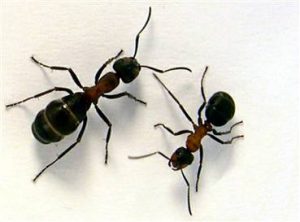 In this section, you will learn how to identify common household ants.
In this section, you will learn how to identify common household ants.
Ants are among the most prevalent pests in households. They are also found in restaurants, hospitals, offices, warehouses, and other buildings where they can find food and water. On outdoor (and sometimes indoor) plants, ants protect and care for honey-dew producing insects such as aphids, soft scales, whiteflies, and mealybugs, increasing damage from these pests. Ants also perform many useful functions in the environment, such as feeding on other pests (e.g., fleas, caterpillars and termites), dead insects, and decomposing tissue from dead animals.
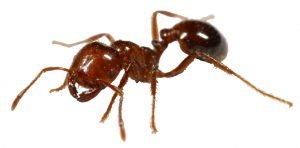 In California, there are about 200 species but fewer than a dozen are important pests. The most common ant occurring in and around the house and garden in California is the Argentine Ant. Other common ant pests include the Pharaoh Ant, the Odorous House Ant, the Thief Ant and the Southern Fire Ant. The Velvety Tree Ant nests in old wood and is a common outdoor species in landscapes. Less common, but of great importance, is the Red Imported Fire Ant, which has recently gained a foothold in southern California. In some areas, the spread of the fire ant has been slowed by competition from the Argentine ant.
In California, there are about 200 species but fewer than a dozen are important pests. The most common ant occurring in and around the house and garden in California is the Argentine Ant. Other common ant pests include the Pharaoh Ant, the Odorous House Ant, the Thief Ant and the Southern Fire Ant. The Velvety Tree Ant nests in old wood and is a common outdoor species in landscapes. Less common, but of great importance, is the Red Imported Fire Ant, which has recently gained a foothold in southern California. In some areas, the spread of the fire ant has been slowed by competition from the Argentine ant.
Carpenter Ants, also invade buildings in California. Although they do not eat wood as termites do, they hollow it out to nest and may cause considerable damage.
Ant Facts
- Ants belong to the insect order Hymenoptera and are close relatives of bees and wasps.
- More than 12,000 species occur throughout the world.
- 200 species occur in California, but fewer than a dozen are important pests.
- Ants are common pests in homes, restaurants, hospitals, and warehouses.
- Ants enter buildings seeking shelter, food, and water.
- Established ant colonies are difficult to control.
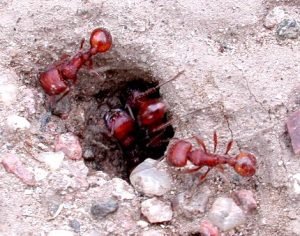

Argentine ant
- Food: sweets, sometimes proteins
- Nest: outdoors in shallow mounds.
- Physical description: 1/8 inch, dull brown

Carpenter Ant
- Food: sweets.
- Nest: in tree stumps, firewood, fence posts, hollow doors or window frames; deposits sawdust like frass outside nests.
- Physical description: large, workers vary from 1/4 to 1/2 inch, black or bicolored red and black

Odorous house ant
- Food: sweets, sometimes proteins.
- Nest: in shallow mounds in soil or debris or indoors in wall voids or around water pipes or heaters
- Physical description: 1/8 inch, dark brown to shiny black, very strong odor when crushed

Pavement ant
- Food: sweets, proteins, grease
- Nest: in lawns or under stones or boards; builds mounds along sidewalks and foundations or near water
- Physical description: 3/16 inch, dark brown to black
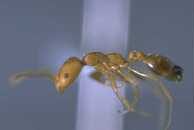
Pharaoh ant
- Food: fats, proteins, sweets
- Nest: in wall or cabinet voids, behind baseboards or insulation, or outdoors in debris
- Physical description: 1/16 inch, yellow or honey-colored to orange
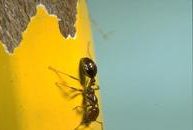
Red imported fire ant
- Food: sweets, proteins.
- Nest: in mounds with multiple openings in soil or lawns and sometimes in buildings behind wall voids
- Physical description: workers vary from 1/16 to 1/5 inch, reddish with dark brown abdomen
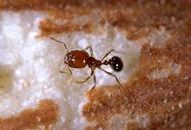
Southern fire ant
- Food: proteins and sweets
- Nest: in small mounds with flattened, irregular craters in wood or under rocks
- Physical description: workers vary from 1/8 to 1/4 inch, amber head and thorax, black abdomen, golden hairs cover body

Thief ant
- Food: greasy and fatty, sometimes sweets. Steals food and ant larvae from other ant nests.
- Nest: outdoors in soil or under rocks or decaying wood, indoors behind wallboards or baseboards
- Physical description: 1/32 inch, yellow to light brown

